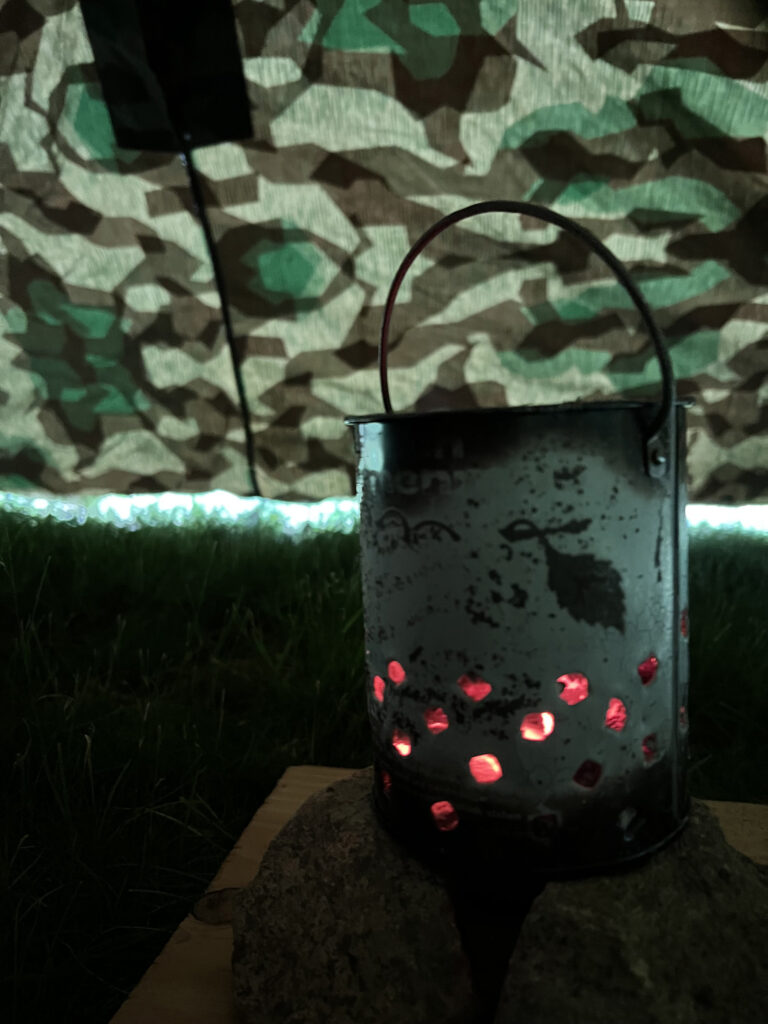
Disclaimer: Burning charcoal, wood or similar fuels releases carbon monoxide and other potentially deadly gases that can build up in enclosed spaces and become fatal. Hundreds of people perish every year in the USA alone from carbon monoxide poisoning. This article is about a historical practice and any attempt to replicate this must be done with extreme caution and with full consideration of associated risks and danger.
The use of steel food cans to make expedient cooking and warming devices probably arose spontaneously in many places after cans were introduced in the first half of the 19th century. An interesting description of European peasant use of food can ovens can be found in a novel by Polish author Jerzy Kosiński. Kosiński was born in 1933 and survived the German occupation with help from local villagers. “The Painted Bird,” published in 1965, is a fanciful account of a small boy wandering the Polish countryside during the war, that draws on Kosiński’s own childhood experiences. In the novel, Kosiński describes rural farmers and workers using a device he calls a “Comet,” which consisted of “a one-quart preserve can, open at one end and with a lot of small nail holes punched in the sides. A three-foot loop of wire was hooked to the top of the can by way of a handle, so that one could swing it… Such a small portable stove could serve as a constant source of heat and as a miniature kitchen.” Kosiński writes that “any kind of fuel available” was used including peat, damp leaves and moss, dry twigs, hay and potato stalks. “People always carried small sacks on their backs or at their belts for collecting fuel for the comets. In the daytime, peasants working in the fields baked vegetables, birds and fish in them.”
The 1933 booklet “Zeltbau” (Tent Construction), written by Hans Möser and published by Franckh’sche Verlagshandlung in Stuttgart, provides instruction and tips for how to build and live in tent camps, and was probably intended for use by members of the Hitlerjugend and other paramilitary organizations. This text suggests that the “simplest, most comfortable and safest” way to heat a tent is with a “Konservendosenholzkohlenzeltheizofen” (food can charcoal tent heating stove), illustrated below. (“Glücksklee” was a brand of milk.)

“Zeltbau” provides the following instructions for making and using the Konservendosenholzkohlenzeltheizofen: “The lid of an empty food can is completely cut away, the bottom and the lower third of the can are fitted with nail holes, and at the top, on the edge, a wire hanger is attached. We light small charcoal pieces and put them in the Konservendosenholzkohlenzeltheizofen. When the coals are glowing well, the oven is filled to the brim. Every one-and-a-half to two hours (depending on the size of the oven) it is refilled with fuel. The nice thing with this is, that the charcoal pieces burn without smoke and almost without ash (just like with a slow-combustion stove!). The charcoal must in any case be dry. Those with fearful minds fix two wire strips to the outside of the can (only with soldered cans!). In this way you also have the possibility to attach an empty shoe polish tin as a tray for the ash, though this will never fill up. Depending on the ground area of the tent, two to three Konservendosenholzkohlenzeltheizöfen can be hung up.”
The winter of 1941-42 was disastrous for German forces serving on the Eastern Front. The Wehrmacht was ill-prepared for the bitter cold temperatures of the Russian battlefields. In the battle for Moscow, there were more casualties from cold than from combat. About 250,000 German soldiers suffered frostbite in that freezing winter. As part of a plan to prevent a repeat disaster the following winter, in 1942 the Wehrmacht issued a handy little book called “Taschenbuch für den Winterkrieg” (Paperback for the Winter War) which featured extensive information about winter camouflage, clothing for keeping warm, maintenance of equipment in low temperatures and other subjects designed to help German soldiers live and fight in the Russian winter. The following excerpt from this manual discusses ideas for improvised heat sources.
“The ability of the soldier to resist the cold is considerably strengthened when as many as possible opportunities to get warm or to stay warm can be achieved, especially for the feet of sentries. Even field positions, bivouacs and emergency lodging can be sufficiently heated with simple equipment or self-made devices. Even a stopgap heater is better than none at all.
The following can serve for warmth:
-Candles
-Lamps
-Cooking equipment (alcohol, benzene, petroleum)
-Warming fires
-Hot stones, etc.
-Field ovens
-Lodging ovens
-Walled-up ovens
Tents, snow bivouacs, etc. can readily be heated with candles, lamps or cooking equipment to a reasonably tolerable temperature. Food cans or marmalade buckets poked through with holes and filled with glowing ashes or wood coals also provide a good, handy heat source (see illustrations). Development of harmful gases must be looked out for (follow operating rules exactly!). Through covering, the melting of snow over the candle etc. can be hindered.”
The text is accompanied by two illustrations that show improvised tin-can heaters. The first shows a hanging tent oven made from a marmalade bucket suspended from tent poles. The second illustration shows a food can, placed on stones, with charcoal as fuel, used as a heat source. Both cans have many holes poked in the sides and bottom.

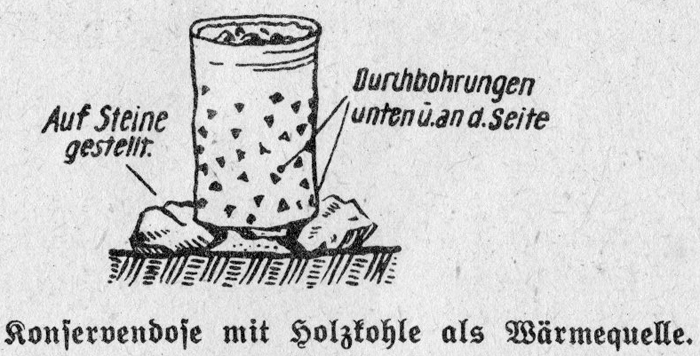
“Tornister-Lexikon für den Frontsoldaten” by Gerhard Bönicke was a book of tips for life in the field that was published by the Wehrmacht for distribution to soldiers in 1943. This book includes instructions for the same type of tent charcoal oven in the section of the book dedicated to expedient oven construction. “For the combustion of charcoal, use a bucket without a lid, with air holes on the sides and bottom as shown. The bucket is placed on 3 or 4 stones or is hung on three tent poles.” This book also provides instructions on how to make charcoal for use as a heating fuel.
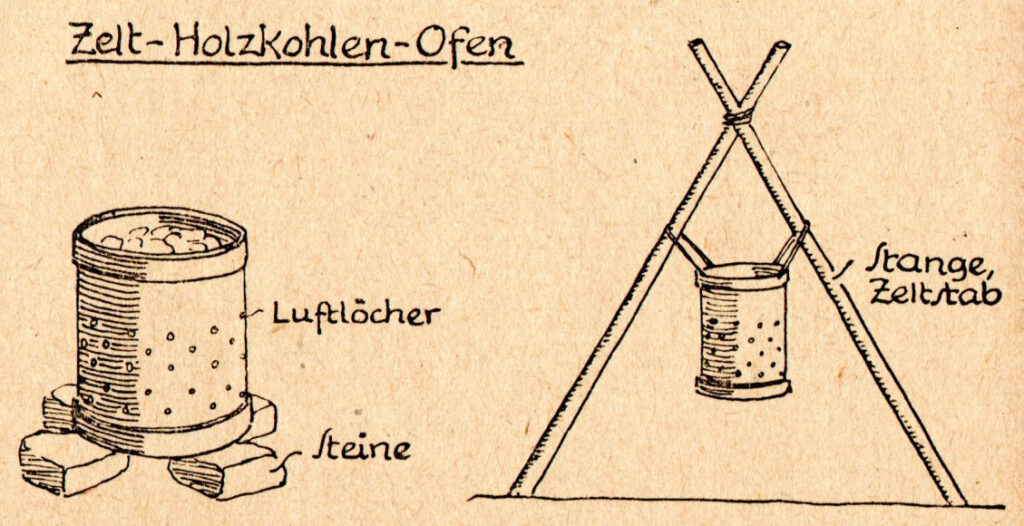
How big was a food can or marmalade bucket? Food cans came in various sizes, of course, but a common size of Wehrmacht issue food can is shown below, together with a circa 1930s German marmalade bucket that is the same size. Both the can and the bucket are about the same size, about 4 inches in diameter and about 4-7/8 inches tall. The straight sides (no ribs) are typical for steel food cans from that era.

To find out how well a food can stove of this size might heat a tent, I used this postwar (1950s or 1960s) West German plum jam bucket that is the same size as the cans shown above. I used a nail to poke the air holes in the sides and bottom, based on the illustrations in the texts. The round nail pokes square holes. I put a piece of round wood inside the can to support it while driving the nail through, and used the round surface of the hammer to push out any minor dents that occurred.
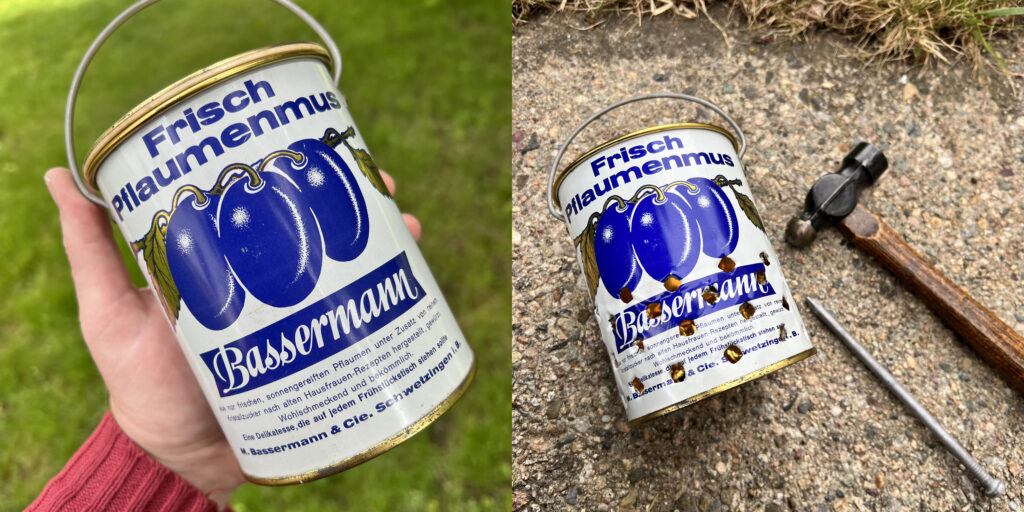
For fuel, I used lump charcoal. After the charcoal was burning I left the stove outside for a while until most of the paint was burned off the metal. I then placed the stove on rocks inside a four-panel pyramidal Zeltbahn tent, a small tent that would have housed four crowded soldiers in WWII. I used only four tent stakes to affix the stove to the ground, and it was a cool, very cloudy, breezy day, with light drizzle. I hung a thermometer in the tent on the opposite side of the stove. The stove burned well, the charcoal gives off a lot of heat and burns for a long time.

After 30 minutes I checked the thermometer. The outside temperature was a cool 53 degrees Fahrenheit. Inside the buttoned-up tent, the temperature had risen to a balmy 80 degrees Fahrenheit!
I let the stove burn out and cleaned off the paint residue. At a future time I might get a carbon monoxide monitor and run another test to learn just how deadly this thing might be.
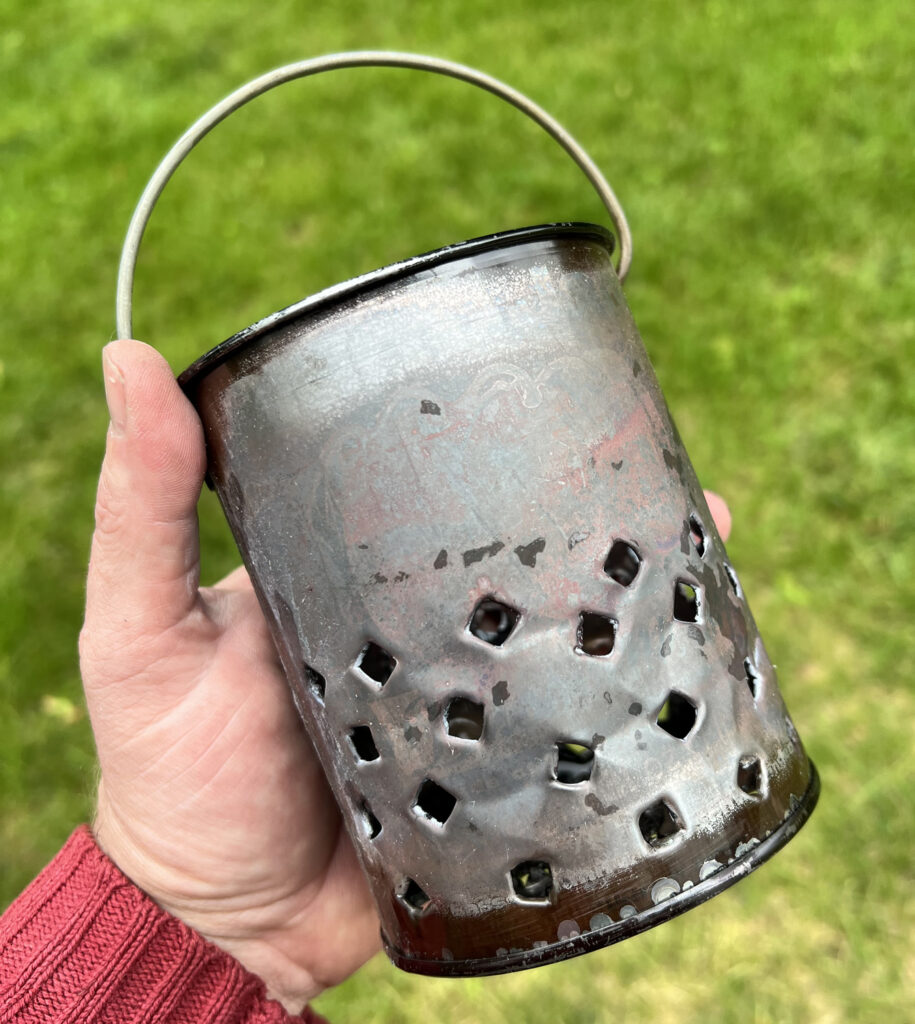
It is easy to see how this useful little stove could have had myriad applications in the field. My test suggests that these little stoves could have kept fortunate soldiers reasonably warm even in the bitter cold.